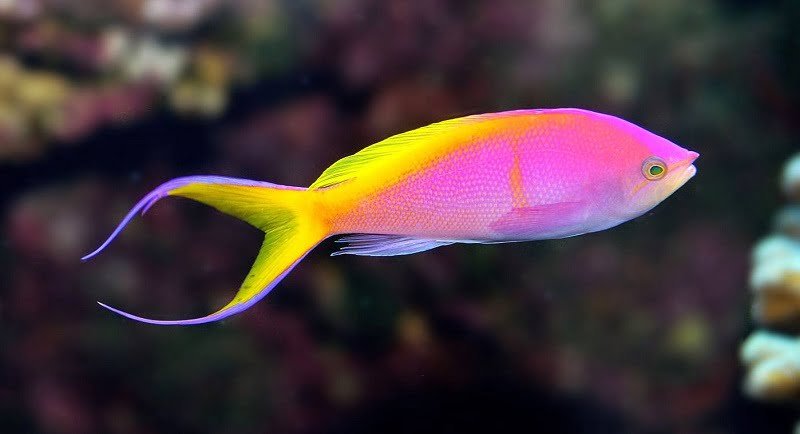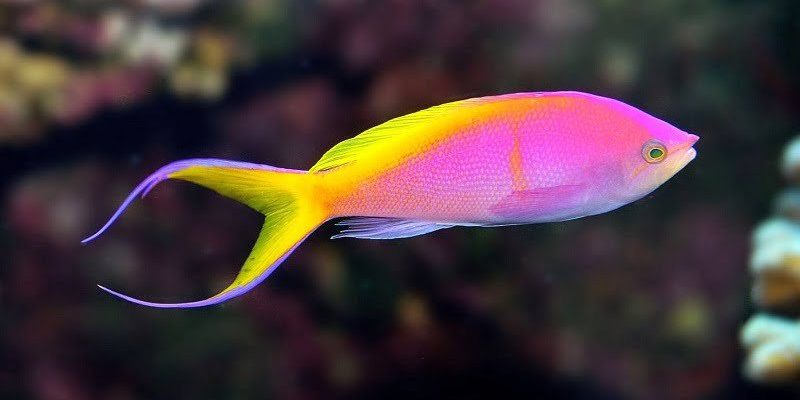
Think of your aquarium as a bustling city. Just as in a city, some species (or people, in this analogy) will get along well, while others may not. Anthias are known for their social nature and generally peaceful demeanor, but that doesn’t mean they can live with just any fish. Let’s explore the compatibility of Anthias with other species, how to create a harmonious environment, and some tips for selecting the right tank mates.
Understanding Anthias Behavior
Before diving into tank compatibility, let’s take a moment to understand Anthias themselves. These fish are typically found in the warm, tropical waters of the ocean, often hanging around coral reefs. In the wild, they thrive in small groups, exhibiting fascinating behaviors that keep them safe from predators.
Anthias are active swimmers and have a unique social hierarchy. They tend to form harems, with one male and several females. This behavior is essential to keep in mind when adding them to your tank. If you only have one male, he may become overly dominant if you have other aggressive fish around, leading to stress and potential fighting. Understanding their social habits gives you a head start on creating a supportive community in your tank.
Best Tank Mates for Anthias
Now that we’ve covered a bit about Anthias, let’s talk about who they can live with. Not all fish share the same temperament, so choosing suitable tank mates is vital. Here’s a shortlist of fish that generally get along well with Anthias:
- Clownfish: Known for their lively personalities, clownfish tend to be moderately aggressive; however, they usually coexist peacefully with Anthias.
- Wrasses: These colorful fish are active swimmers and are known to work well in community tanks.
- Cardinalfish: Peaceful and shy, cardinalfish won’t compete with Anthias for space or food.
- Gobies: These small, bottom-dwelling fish complement the active Anthias nicely without causing trouble.
- Damsels: While some varieties can be territorial, many are suitable tank mates as long as the tank is large enough.
When choosing tank mates, look for fish that share similar temperaments and habitat needs. Ideally, you want species that won’t compete aggressively with your Anthias for food or space.
Fish to Avoid with Anthias
Just like there are perfect matches, there are also fish that simply won’t get along with Anthias. It’s best to steer clear of species known for their aggressive behavior. Here are some fish to avoid:
- Groupers: These fish can be quite territorial and may see small Anthias as potential snacks.
- Some Tangs: While generally peaceful, certain tangs can become aggressive, especially when defending territory.
- Angelfish: Many angelfish can be aggressive towards smaller species like Anthias.
- Triggerfish: With a reputation for being bullies in the tank, triggerfish are best kept away from Anthias.
The potential for aggression can lead to stress and fighting, which can harm your Anthias. It’s a classic case of “better safe than sorry.” Keep things peaceful by researching each species before making decisions.
Creating a Comfortable Environment
So, you’ve got your Anthias picked out and know who they can share a home with. Now, let’s talk about creating a comfortable environment for them. Here’s the thing: Anthias thrive in a tank that mimics their natural habitat. That means plenty of swimming space and hiding spots.
Use live rock, corals, and plants to create hiding spots for your fish. This setup allows your Anthias to retreat when feeling stressed or threatened. Also, pay attention to water conditions. Anthias prefer clean, well-oxygenated water with stable temperature and salinity levels. Regular water changes will help you maintain a healthy environment that benefits all your tank mates.
Feeding Anthias in a Community Tank
When you’re sharing a tank with multiple species, feeding can get a bit tricky. Anthias are known to be picky eaters, often preferring live foods. However, they can adapt to high-quality frozen foods and flakes. You might be wondering how to ensure all fish get their share while keeping the peace.
Here are some tips for feeding Anthias in a community setup:
- Feed small amounts: Offer multiple small feedings throughout the day instead of one large meal. This approach cuts down on competition.
- Use sinking pellets: These will give slow feeders a chance to catch up while others swim around.
- Consider a feeding ring: A feeding ring can help keep food in one area, preventing more aggressive feeders from hogging it all.
By making feeding a thoughtful process, you can keep everyone happy and healthy.
Monitoring Tank Dynamics
Once you have your Anthias and their tank buddies settled in, it’s essential to keep an eye on the dynamics of the tank. Fish behavior can change as they adjust to their new surroundings, and a situation that seems peaceful at first might develop tensions over time.
Watch for signs of stress, such as hiding, rapid gill movement, or aggression. If you notice one fish picking on another, it might be time to rearrange the tank or separate the aggressor. Sometimes, adding more hiding spots or rearranging the decor can break up territorial disputes.
Maintaining a balance in your aquarium is crucial to ensuring that all your fish, including your Anthias, are thriving and living harmoniously.
In summary, can Anthias live with other fish? Absolutely, as long as you choose their companions wisely. By selecting peaceful tank mates, providing a comfortable environment, and monitoring interactions, you can create a vibrant community that showcases the beauty of your Anthias while ensuring the well-being of all your fish.
Remember, every aquarium is unique, and what works for one setup may not work for another. Take your time, do your research, and enjoy the journey of building your underwater world. Happy fishkeeping!

